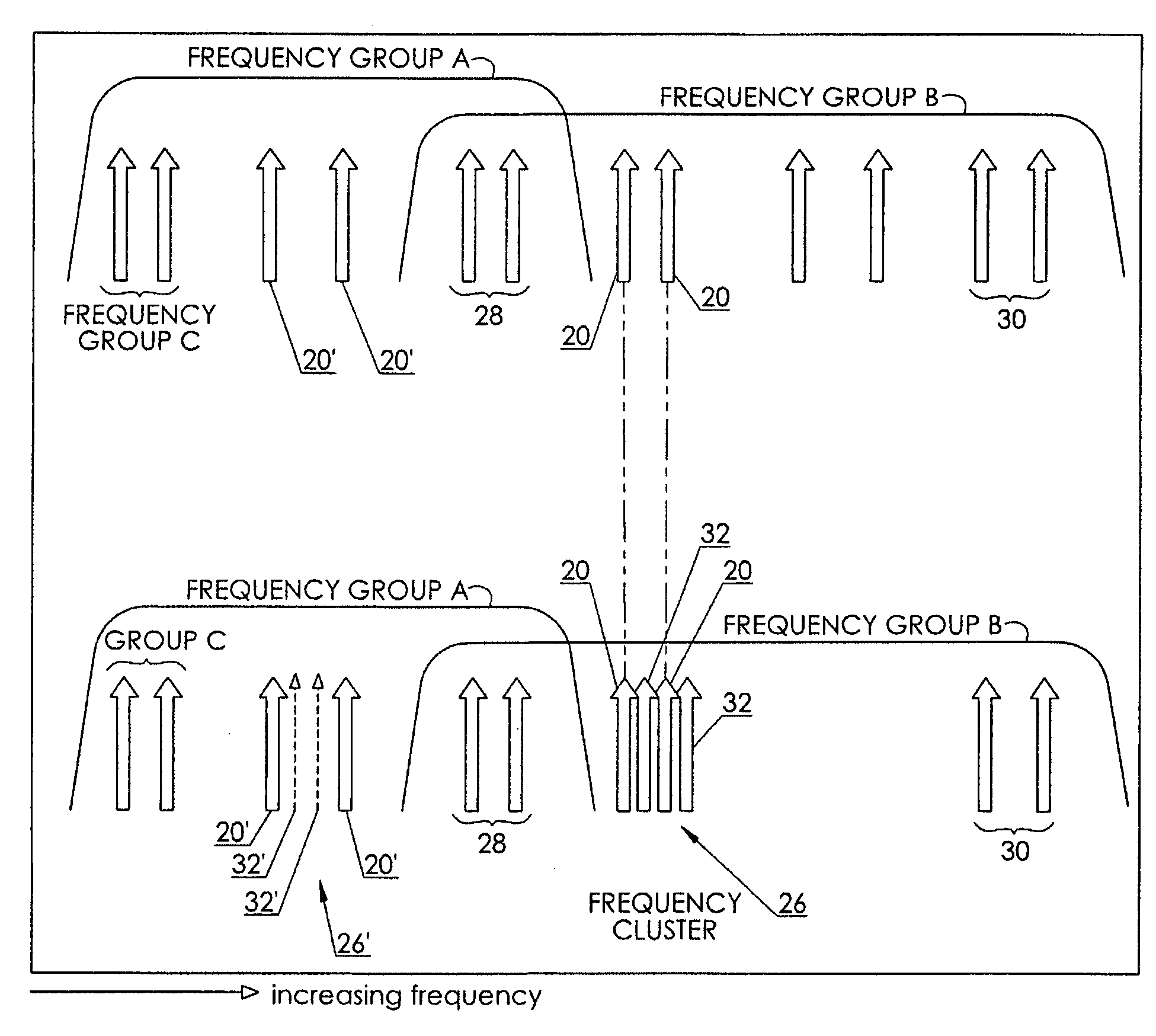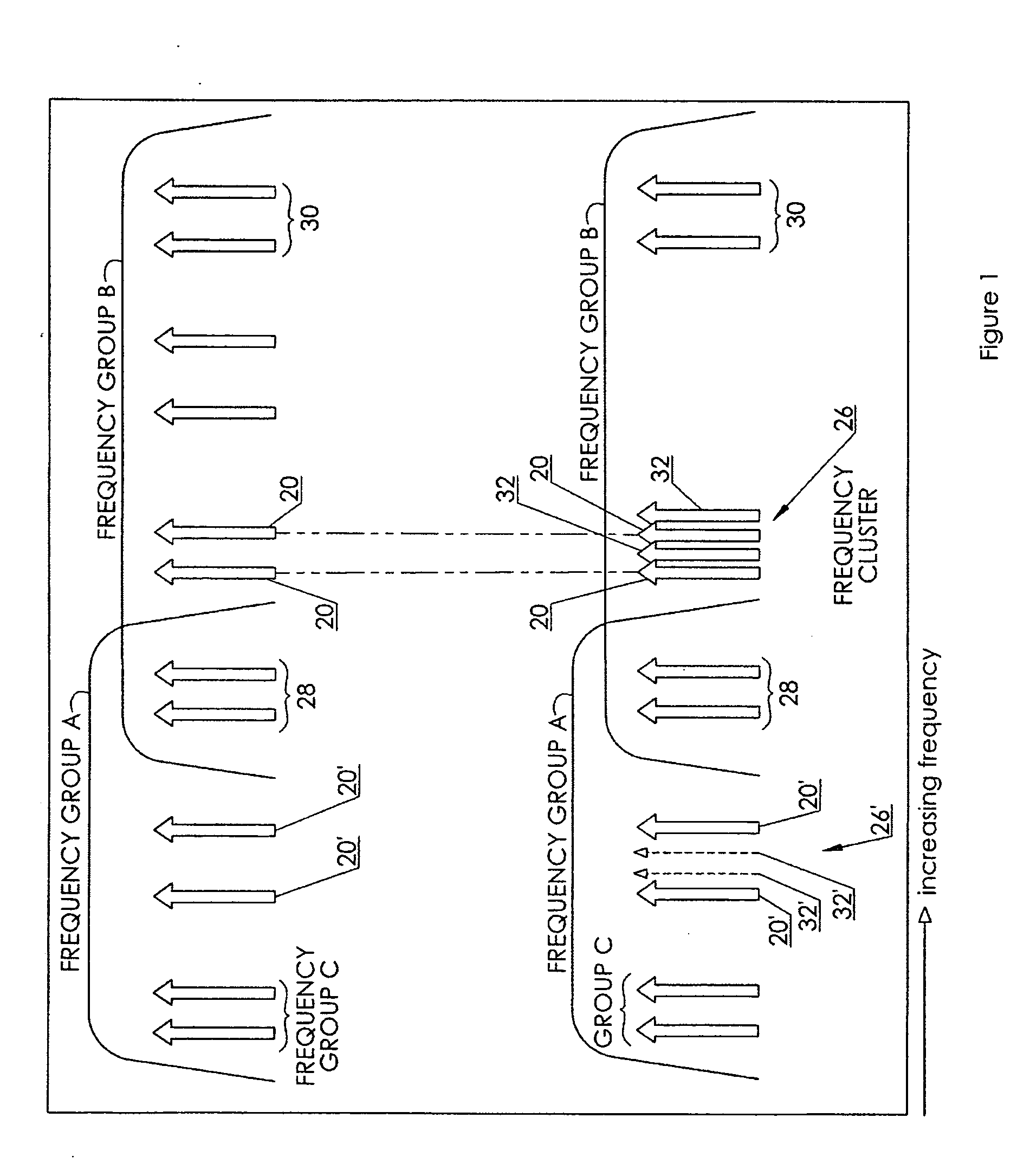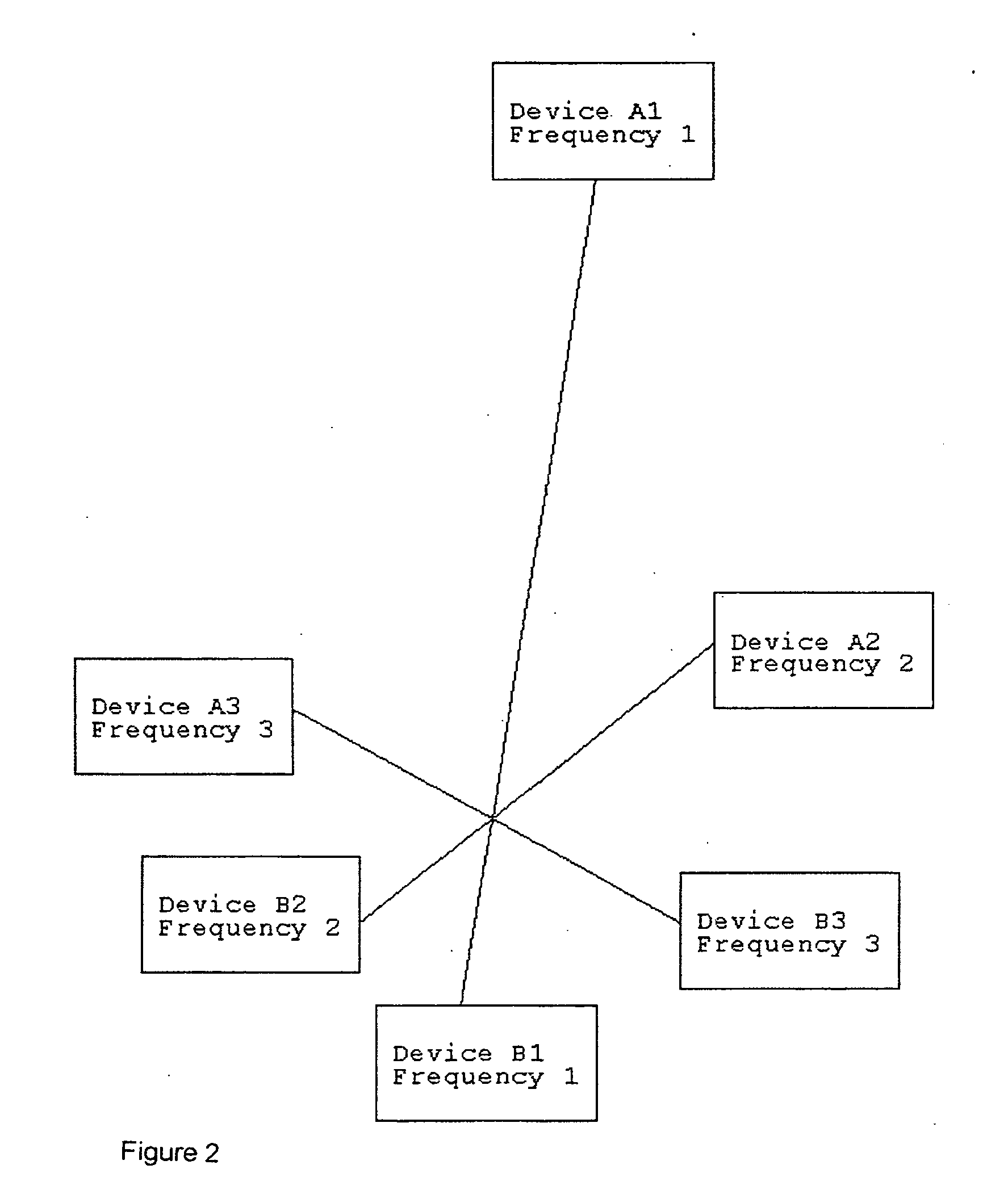Non-orthogonal frequency-division multiplexed communication through a non-linear transmission medium
- Summary
- Abstract
- Description
- Claims
- Application Information
AI Technical Summary
Benefits of technology
Problems solved by technology
Method used
Image
Examples
Embodiment Construction
[0031]The top portion of FIG. 1 diagrammatically illustrates the method of the present invention for multiple frequencies. The frequencies are grouped into groups A, B and C, although this is not intended to be limiting. This represents the fact that a single device need not listen or transmit on all system frequencies. Note that there is overlap between the groups so that the system can be coordinated by a device that does listen to and transmit on frequencies from two or more groups. As well, this overlap allows devices to cooperate to route messages. If for example there are more devices of type A than type B, the type B devices can request routes through the type A devices using the overlapping frequencies.
[0032]The frequencies are spaced so that they will not interfere. They are spaced so that a digital filter can separate them to a large degree, on the order of 80 dB of separation. An example of a useful digital filter would be a Blackman-Harris window function modulated with ...
PUM
 Login to View More
Login to View More Abstract
Description
Claims
Application Information
 Login to View More
Login to View More - R&D
- Intellectual Property
- Life Sciences
- Materials
- Tech Scout
- Unparalleled Data Quality
- Higher Quality Content
- 60% Fewer Hallucinations
Browse by: Latest US Patents, China's latest patents, Technical Efficacy Thesaurus, Application Domain, Technology Topic, Popular Technical Reports.
© 2025 PatSnap. All rights reserved.Legal|Privacy policy|Modern Slavery Act Transparency Statement|Sitemap|About US| Contact US: help@patsnap.com



